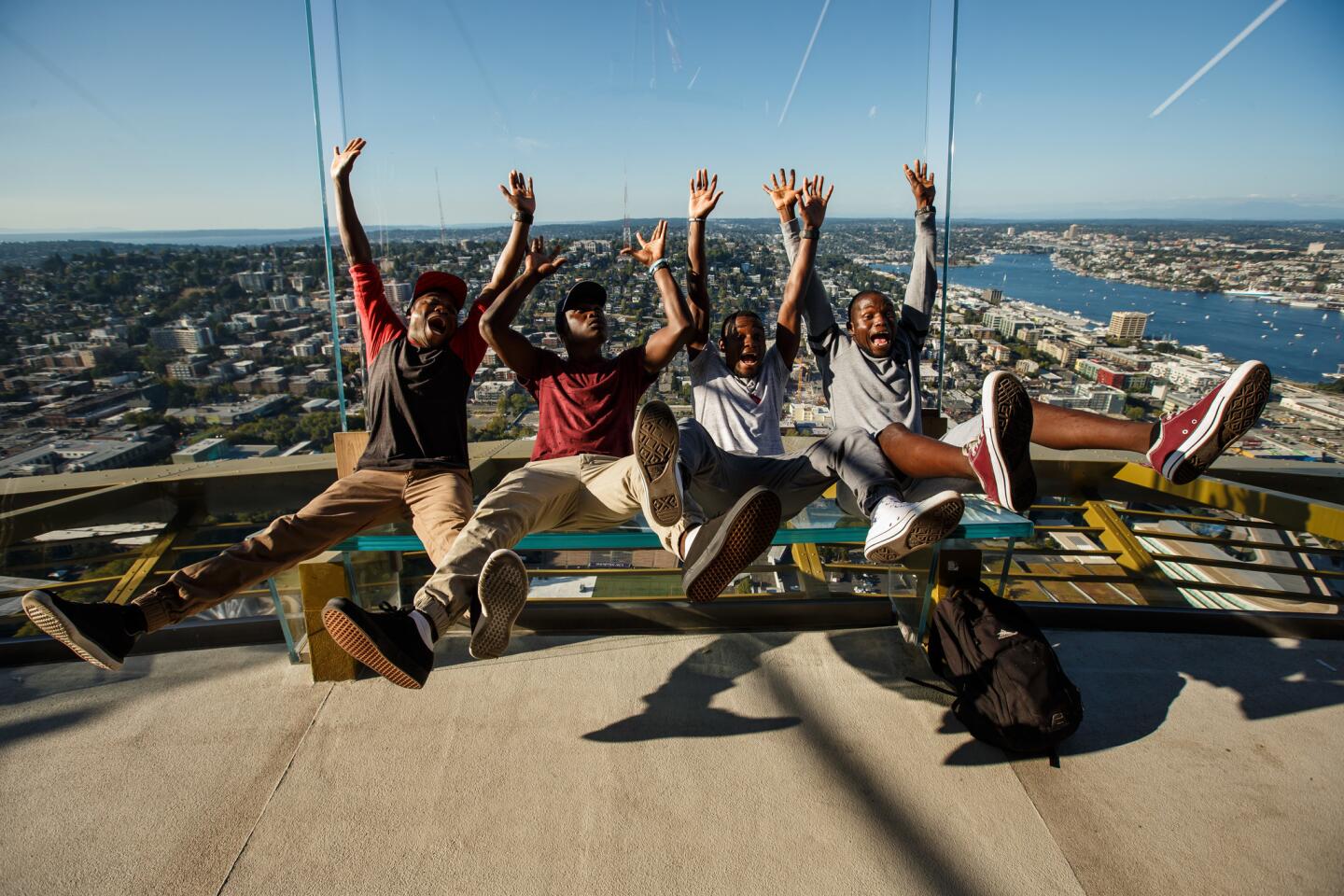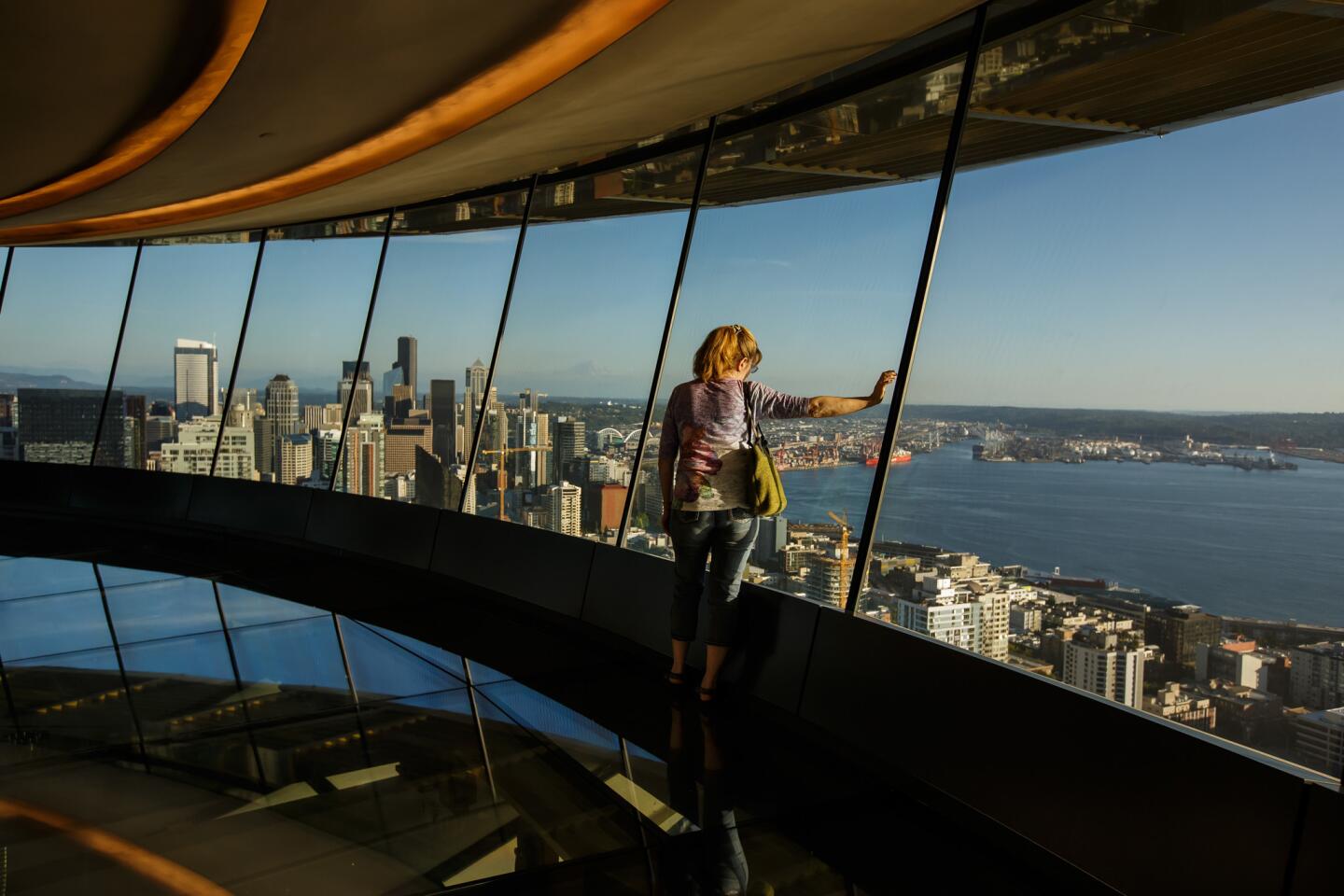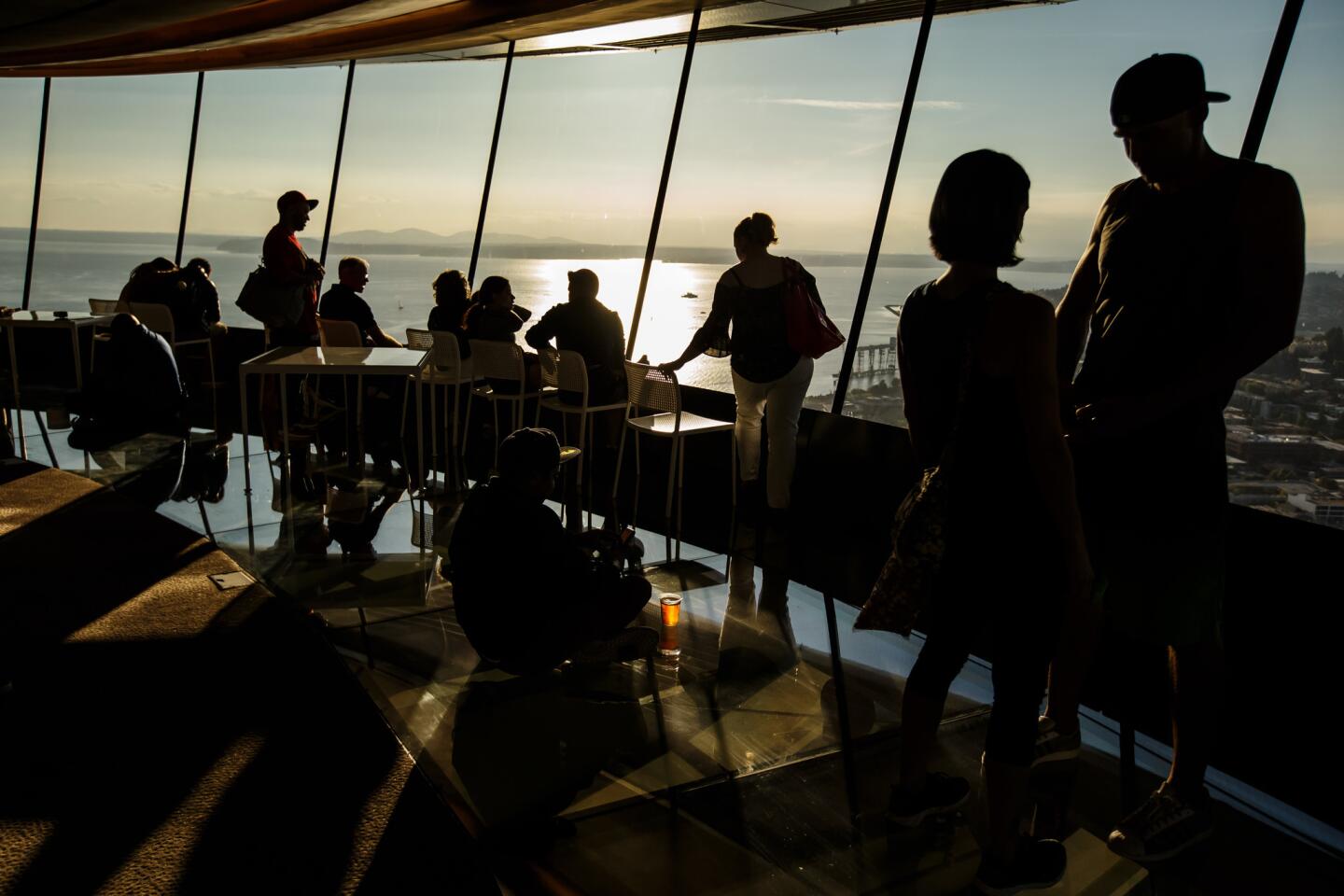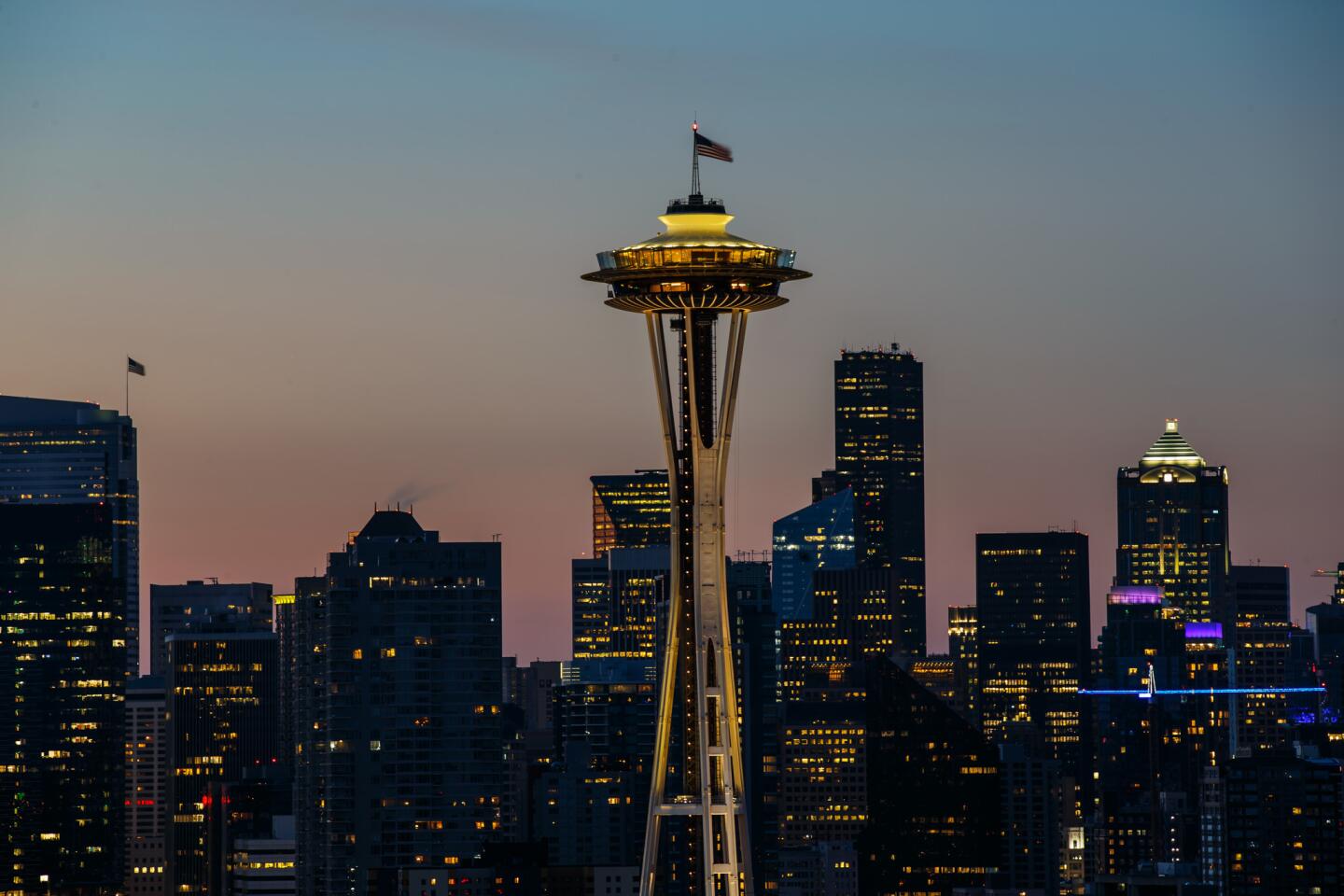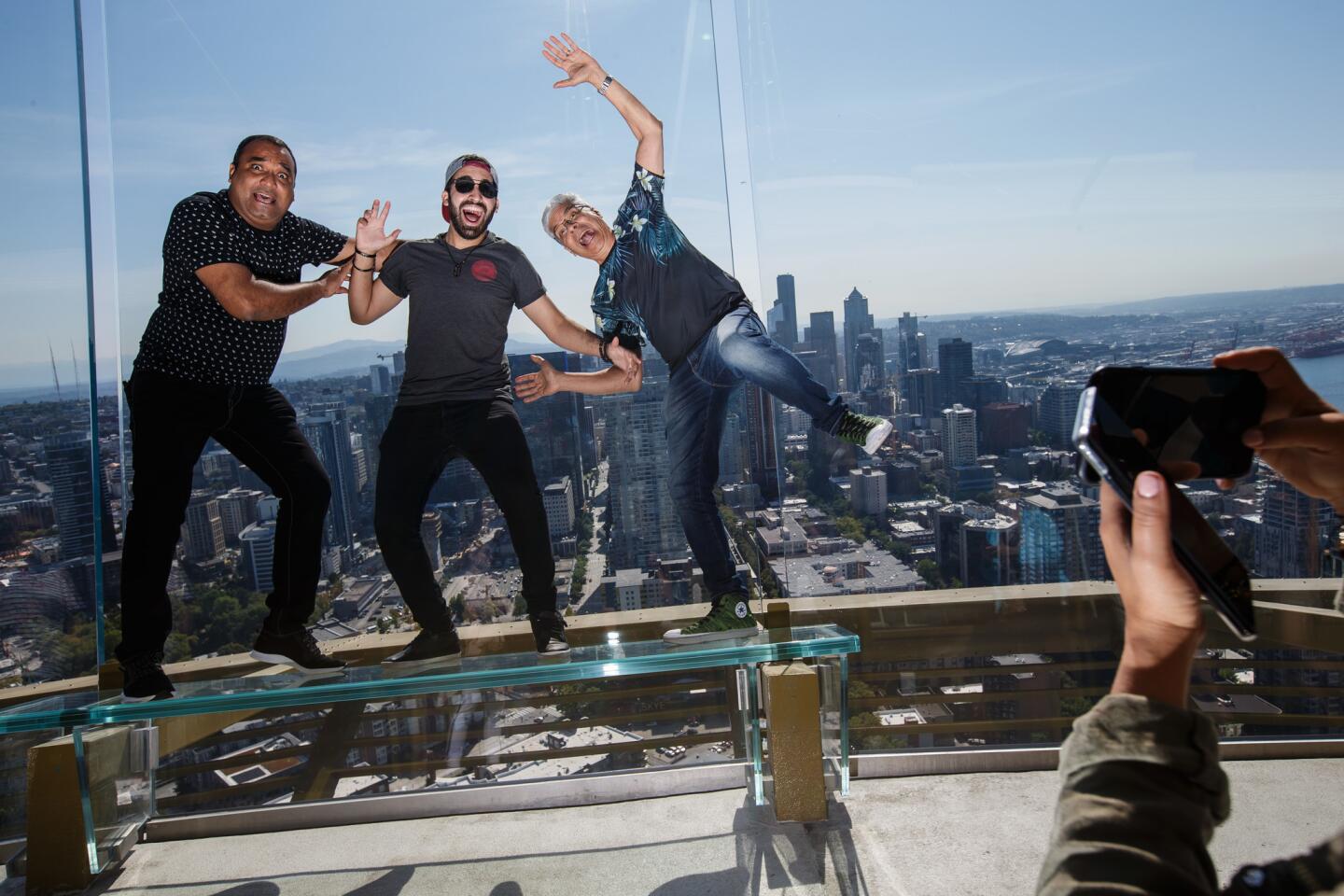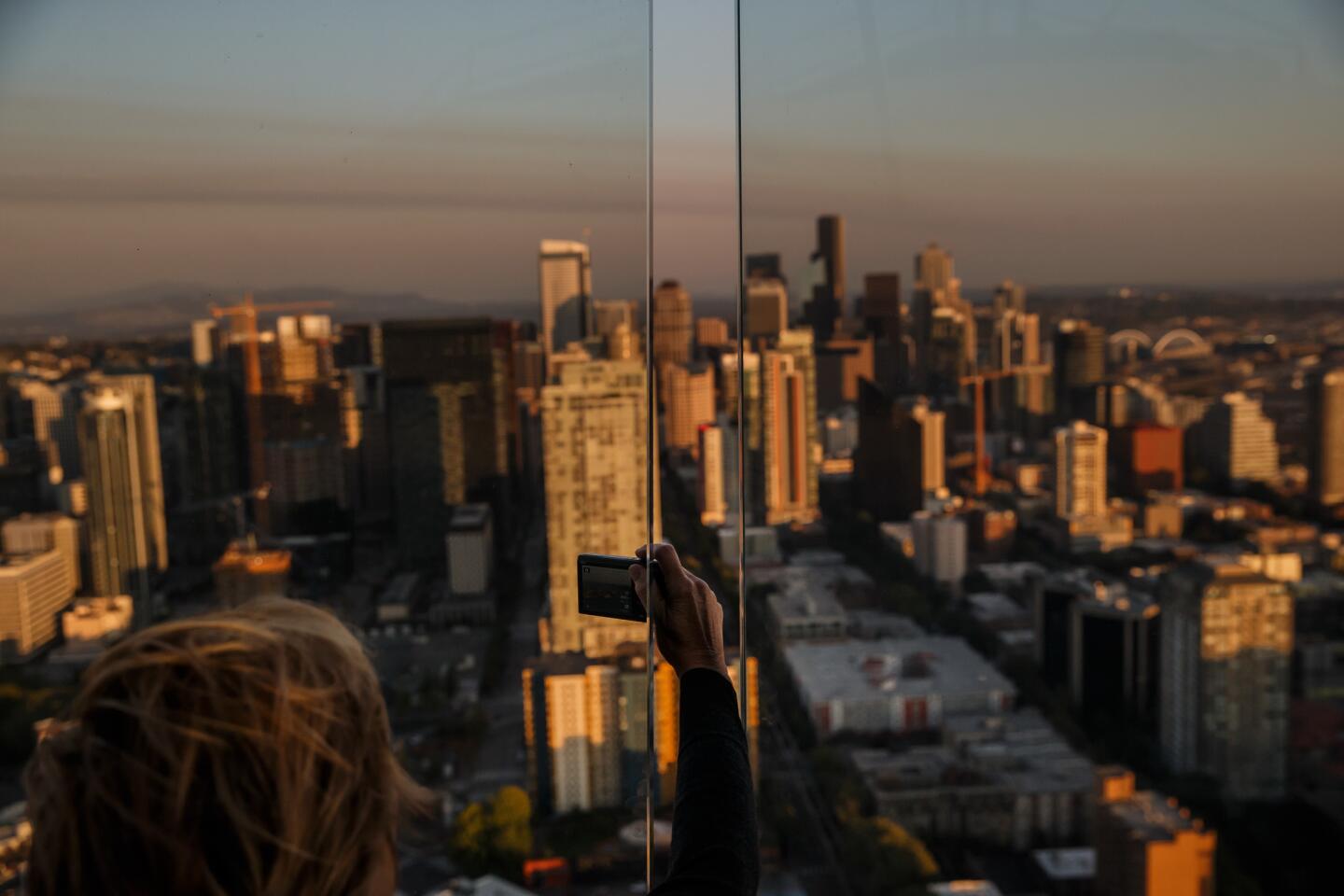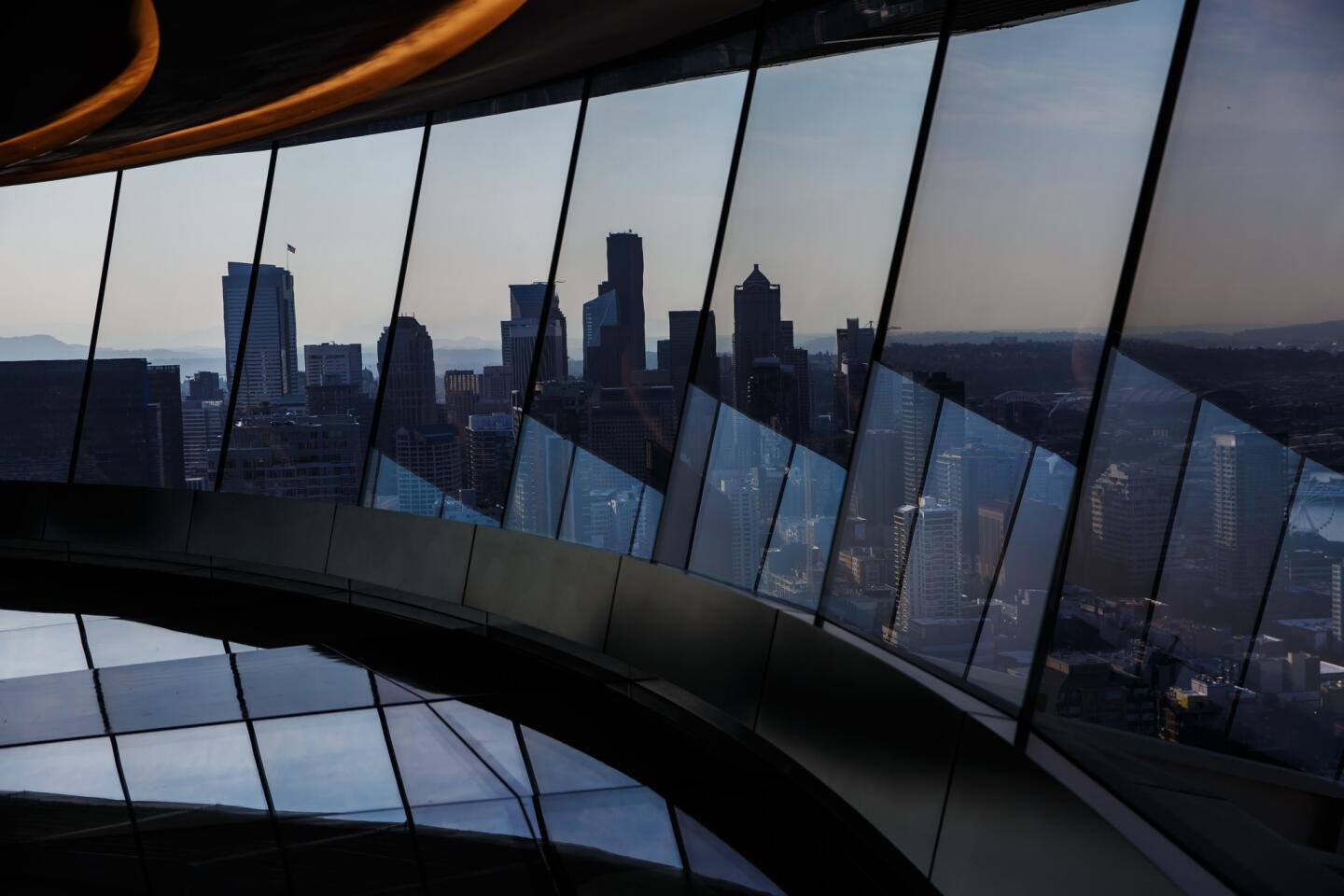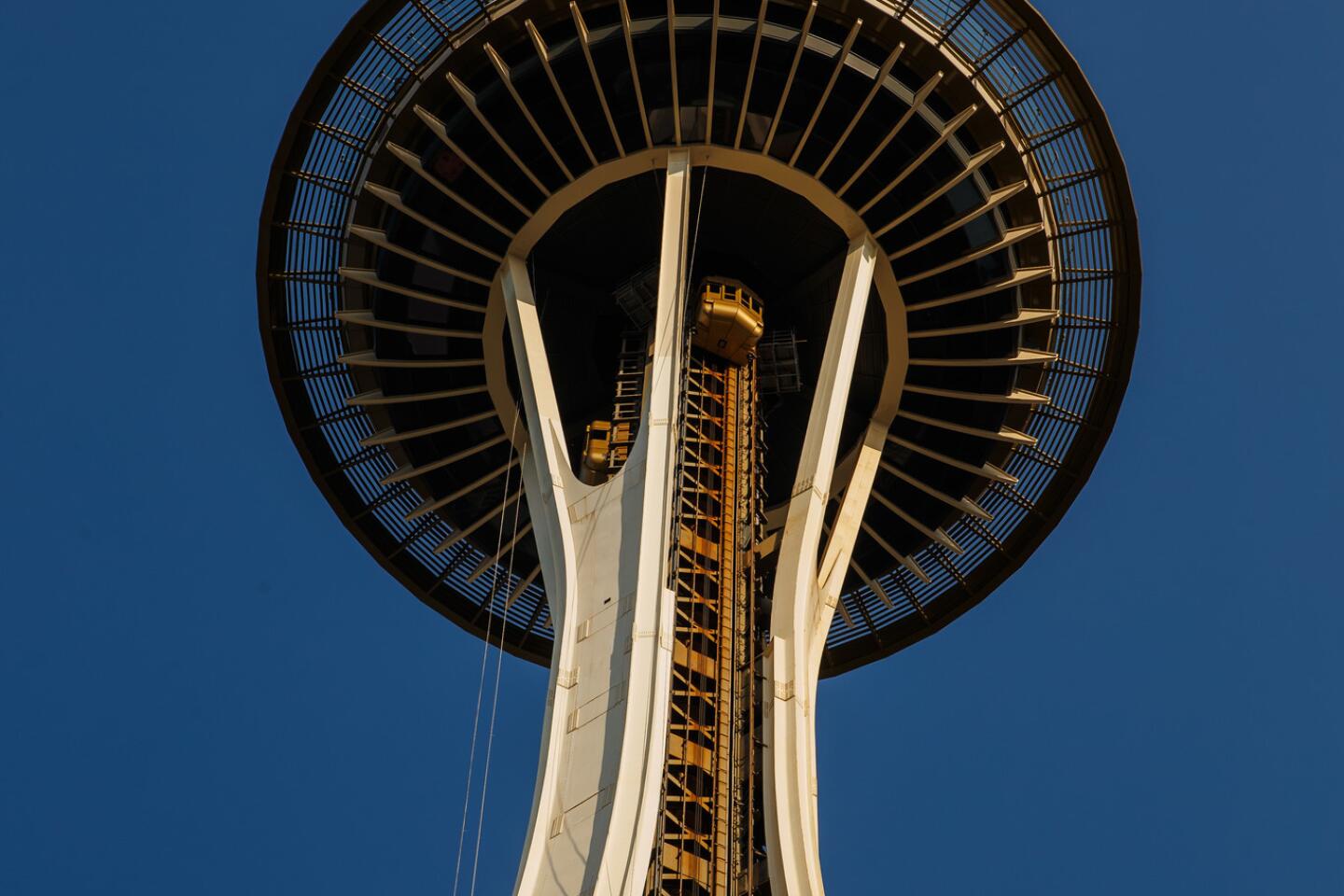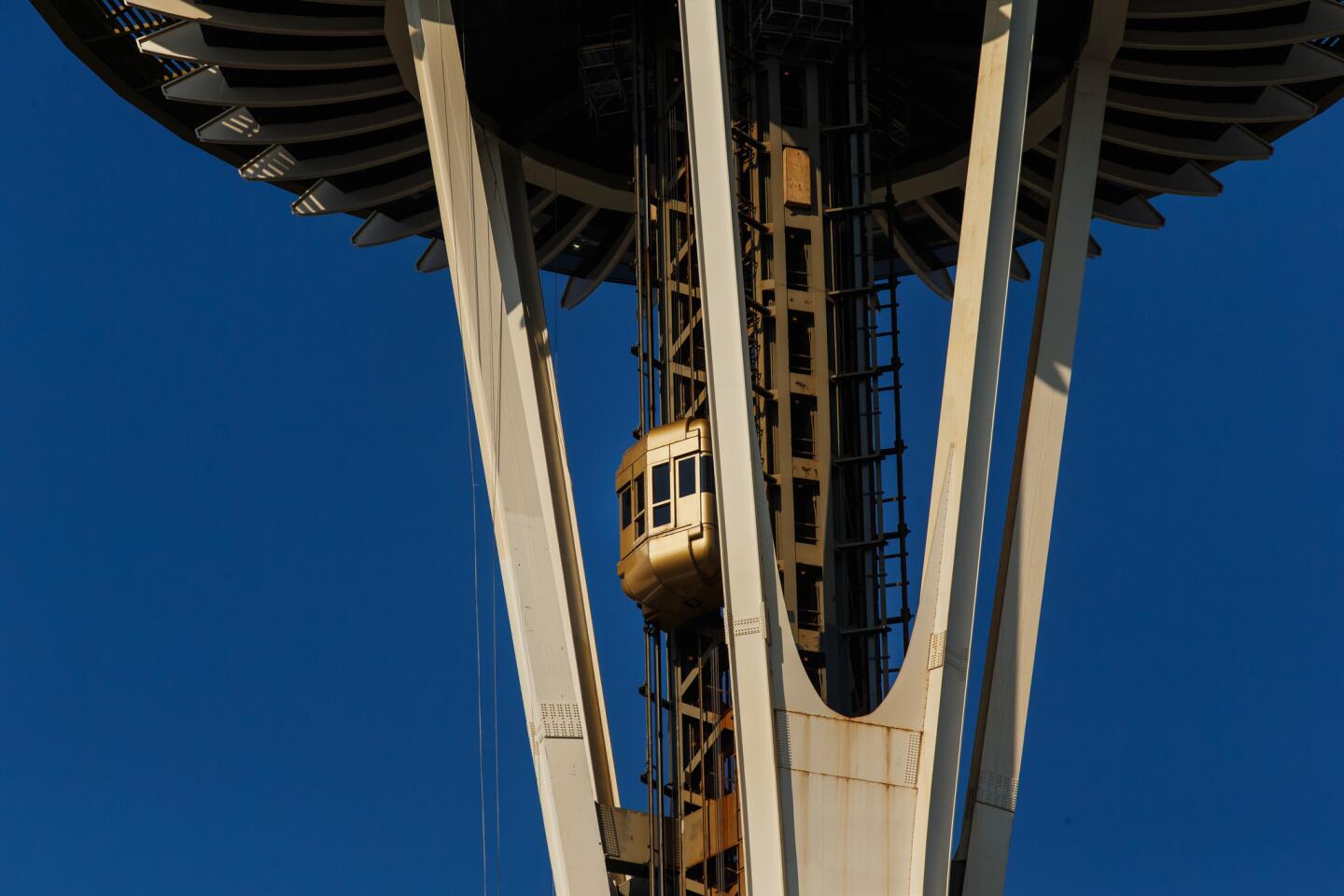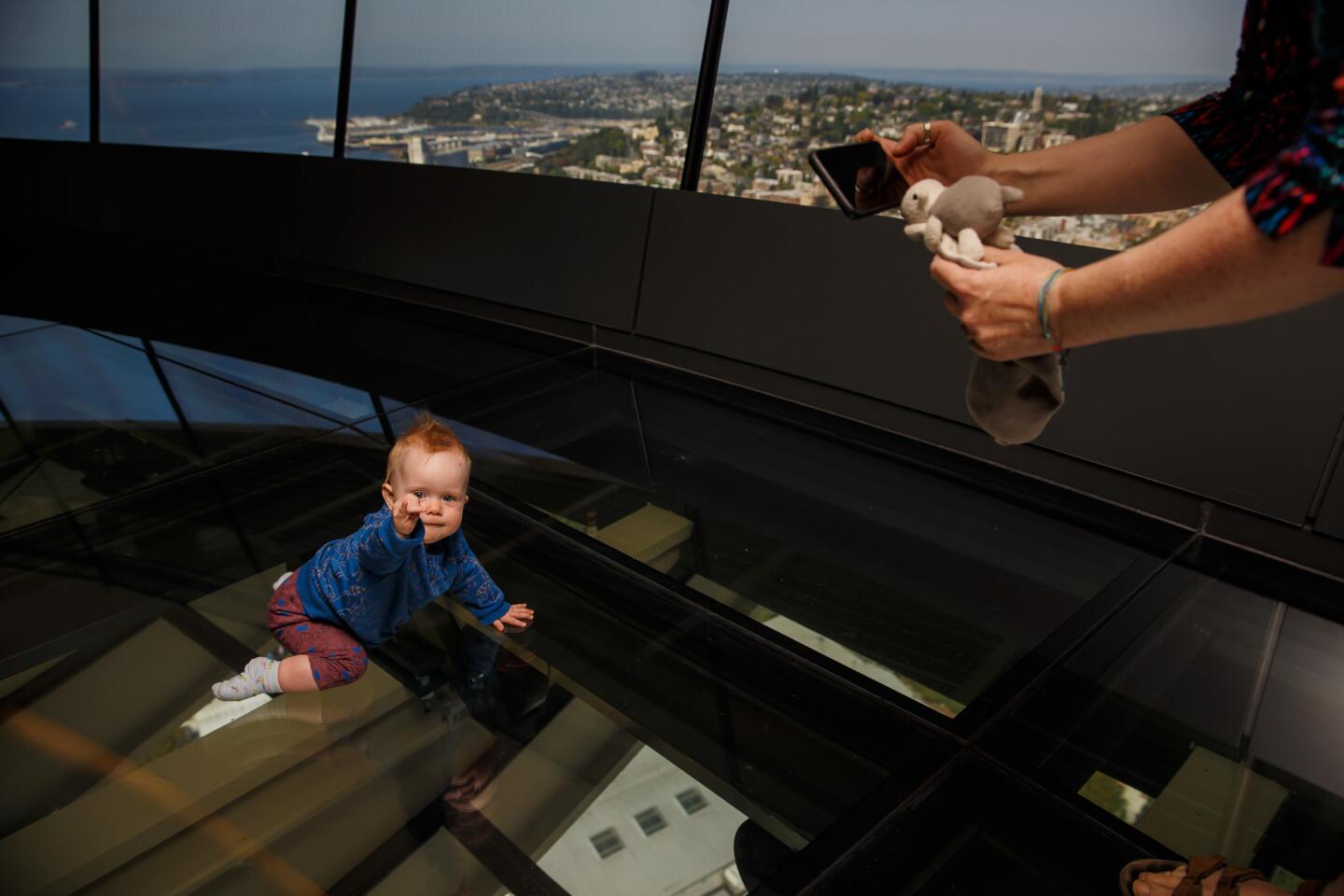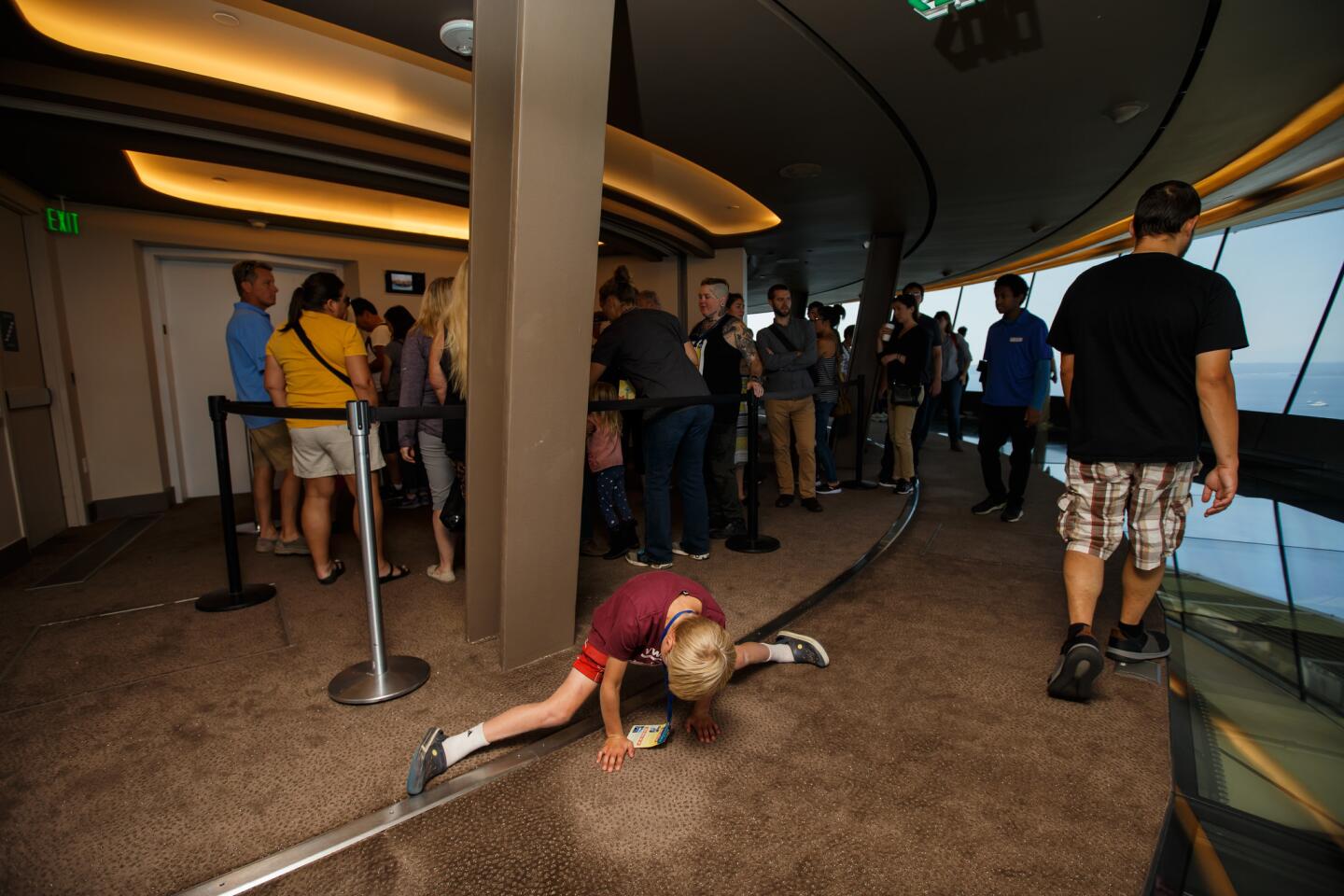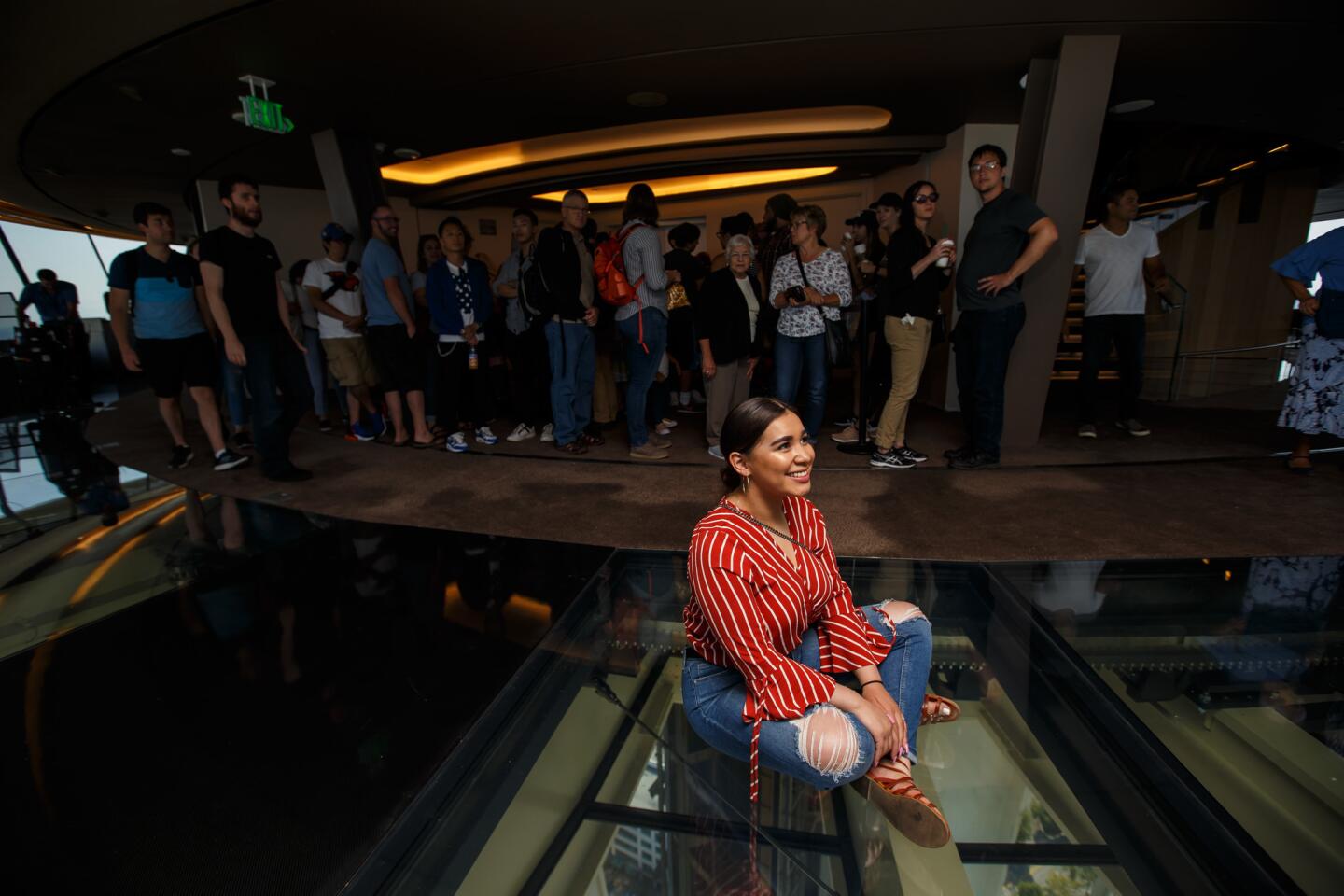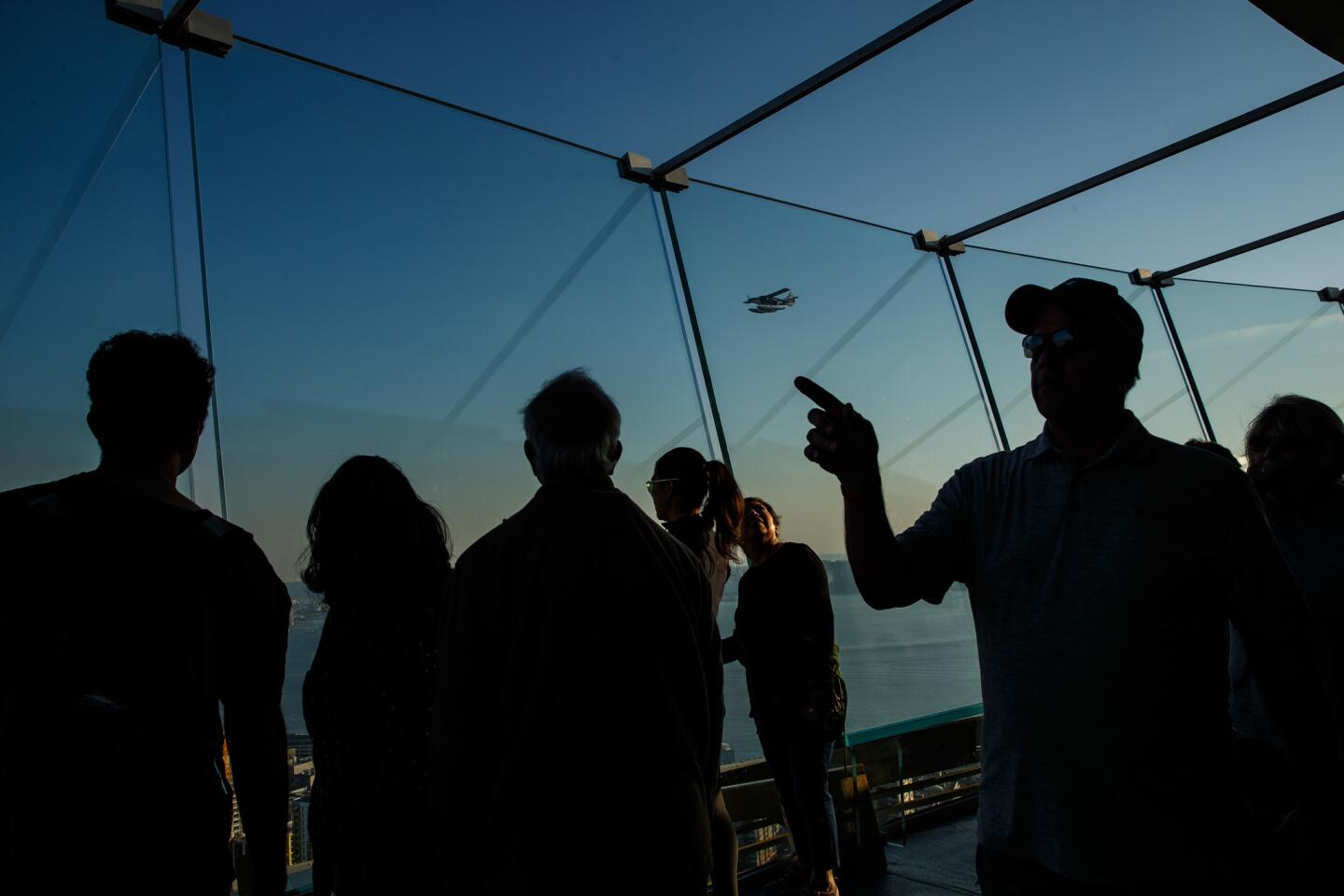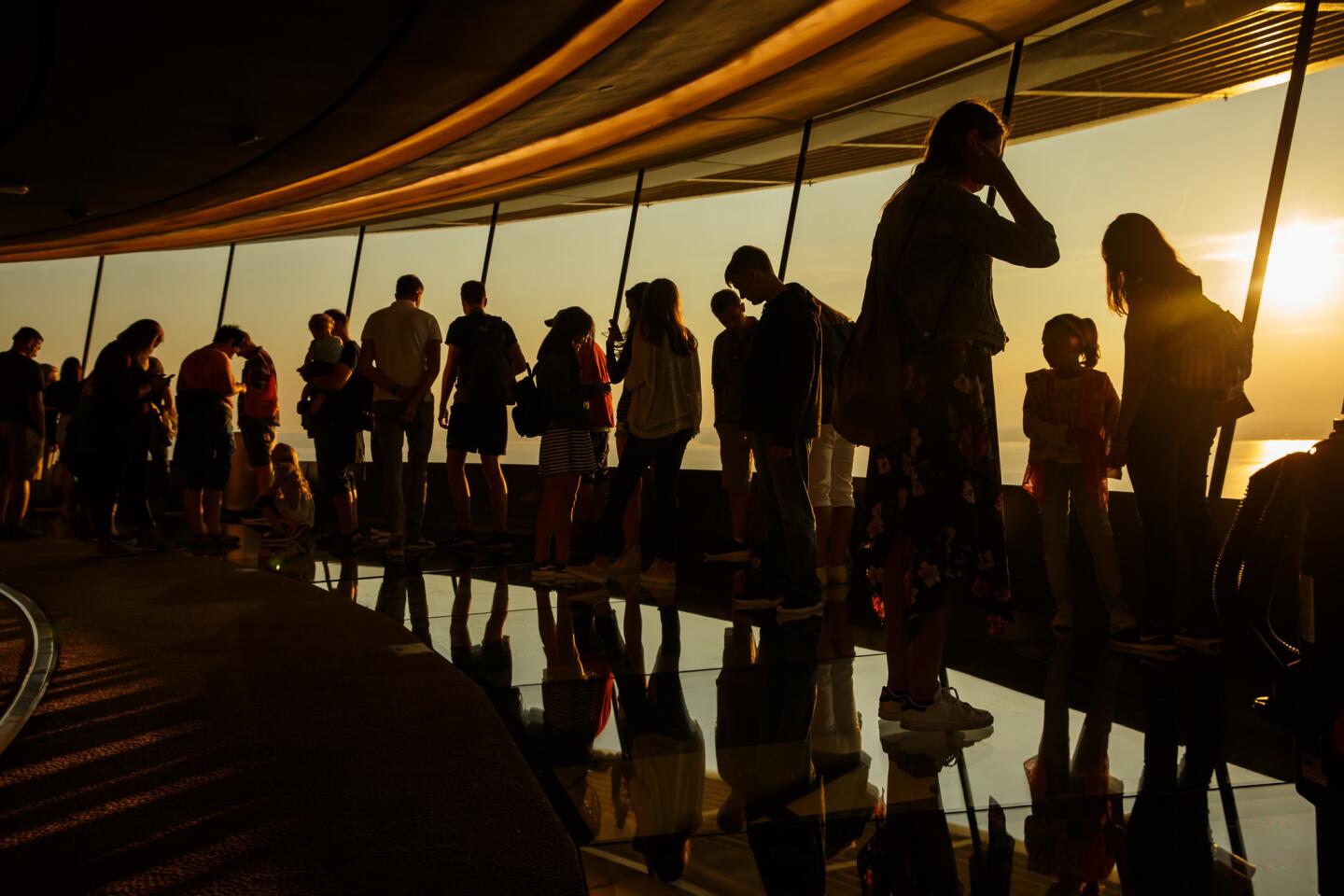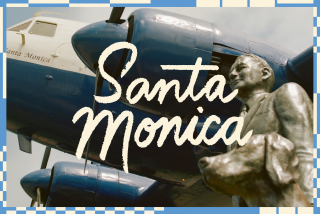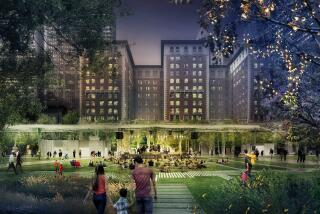Even an icon needs a little work occasionally. Case in point: Seattle’s Space Needle. It’s never looked better
- Share via
Reporting from Seattle — Some of America’s most iconic towers have had significant makeovers in the last decade, including the 2009 redo of New York’s Empire State Building and Chicago’s Willis Tower, formerly the Sears Tower.
The most recent to get a reboot: Seattle’s Space Needle, where architects added a new glass shell on the observation deck, a rotating glass floor called the Loupe nearly 3 inches thick for the restaurant one level below, and a spiral staircase between the two made out of — what else? — glass.
I toured the tower in June when the $100-million revamp was about two-thirds complete. It is now open and only the restaurant interiors remain to be finalized, which should happen by late fall.
The aim of the redo, said project architect Blair Payson, was to return the tower to its place as one of the chief architectural embodiments of the American Space Age, a tangible reflection of a key moment in Seattle’s history.
“There were all these accretions, many of them added after the building went up,” Payson said. He showed me a photo of the visual clutter that existed before this renovation, the biggest in the tower’s history.
“On the observation deck before, I’d have to lift my two little daughters up to show them the view,” he said. “Now there’s nothing between you and the city.”
Gulp.
Seattle story
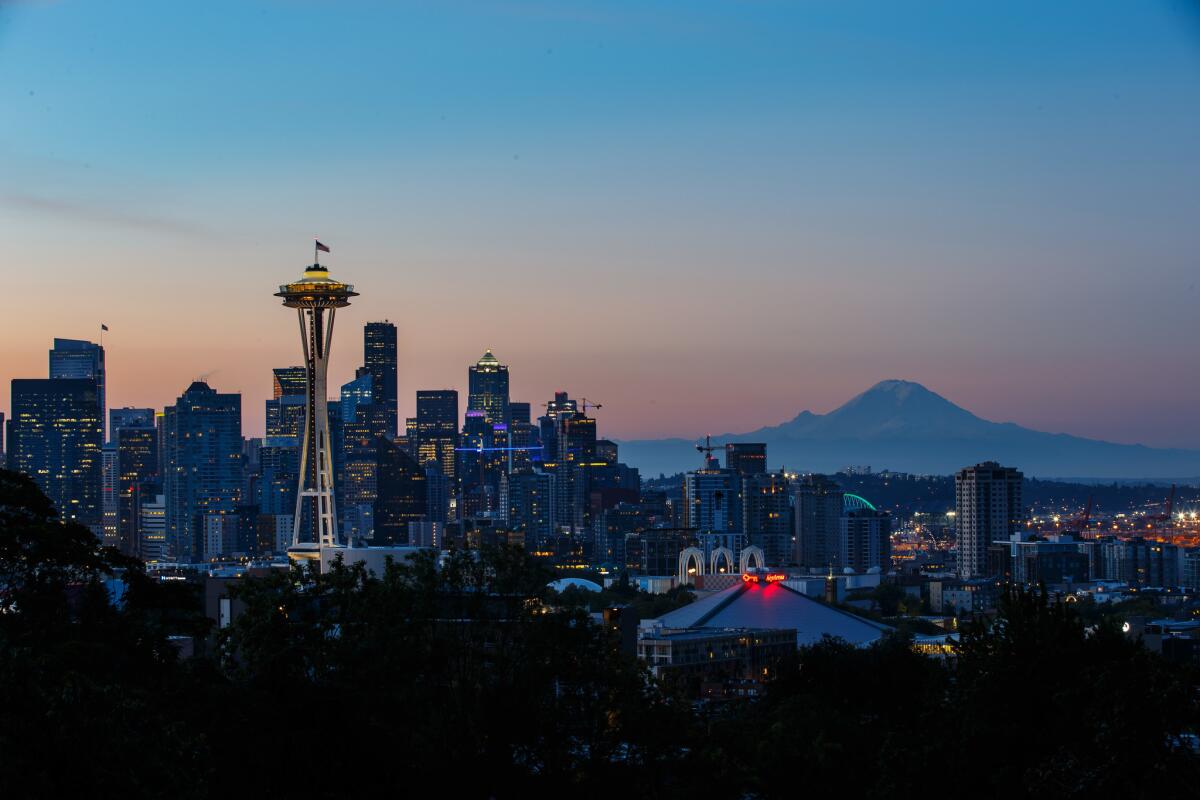
We walked off the elevator, and he was correct. There was Seattle from just over 500 feet up the 605-foot tower.
As vertigo sufferers are instructed to do, I pulled my chin up and looked across, not down, at a floatplane headed for a landing on Lake Union.
Payson urged me to try one of the observation deck’s Skyrisers, glass seats attached to the transparent shell. They’re slanted backward so the brave can recline.
I managed it (barely) and steeled myself for glimpses at the office building that masquerades as Seattle Grace Hospital in “Grey’s Anatomy”; at the newish restaurant and gallery built to showcase some of artist Dale Chihuly’s extravagant blown-glass creations; and at the new geodesic spheres at the center of Amazon’s downtown campus.
Many of the sights of contemporary Seattle are visible from the tower, but it also brings visitors into the thick of the town’s history and aspirations.
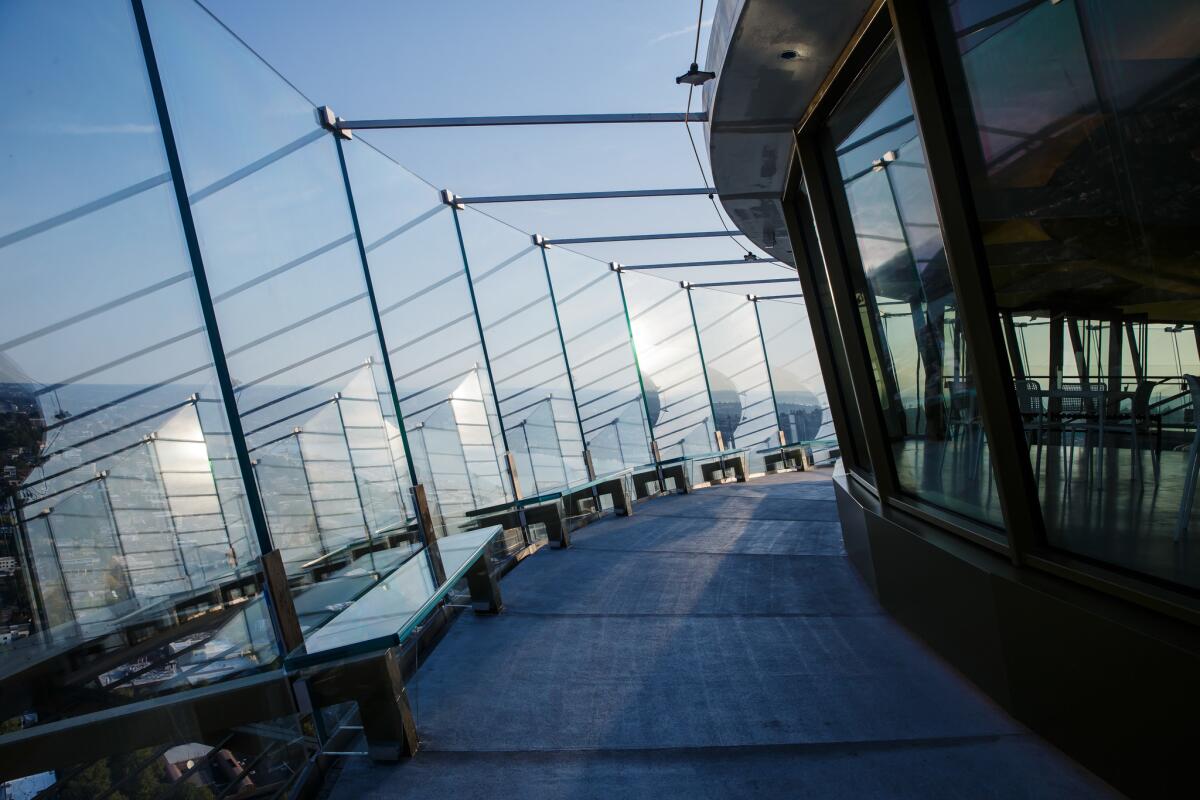
“The Space Needle really is this great Seattle story,” Payson said. “It was conceived, designed and built by locals. We’ve been makers here for a long time, tech-oriented since long before Amazon and Microsoft.”
As the centerpiece of the 1962 World’s Fair, it embodied “a mix of fear and optimism,” said Leonard Garfield, executive director of the local Museum of History & Industry. “The Soviets had launched Sputnik in 1957, and the Cold War was going full throttle. But the fair’s theme, Century 21, focused on the possibility of the future, what could be accomplished.”
The plan was to show off new innovations such as monorails and direct-dial telephones, but local civic leader Eddie Carlson, then president of Western International Hotels (later renamed Westin), wanted something grander to draw the world’s attention to his hometown.
“The story is he’d gone to get a Mercedes in Stuttgart [Germany],” said Jeffrey Wright, head of the family construction firm that now owns the Space Needle. “He went up the Stuttgart Tower for a meal, and eureka.”
Carlson sketched out an idea for a tower to serve as the fair’s “Hello, World” exclamation point. Seattle architect John Graham and his firm then took Carlson’s idea and designed the Space Needle, adding a restaurant that would rotate.
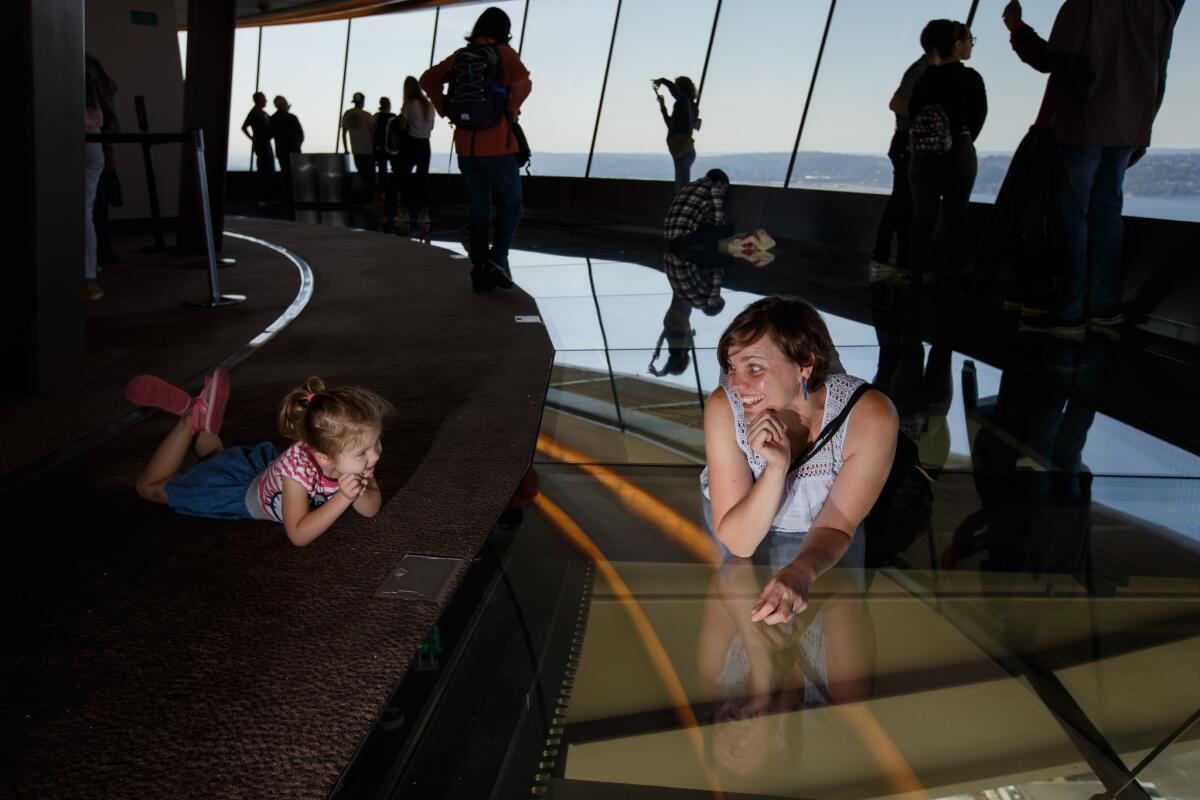
Another legendary local, University of Washington architecture professor Victor Steinbrueck, is widely credited with conjuring the Needle’s three legs that slope into the elevator bank, then bifurcate and cup the saucer-shaped restaurant and observation deck.
The design complete, trucks lined up in spring 1961 for what was then thought to be the largest continuous concrete pour — 467 truckloads — in the history of the West. What is certain is that when the Space Needle was completed it was the tallest building west of the Mississippi.
The tower has since become a core piece of Seattle’s identity. Its outline was featured in the opening credits of the TV show “Frasier,” and the building had a cameo in the movie “Sleepless in Seattle.” A recent survey found that 78% of respondents from around the world could identify Seattle’s skyline, but take the Needle out and only 8% could.
“When I moved to Seattle I couldn’t have imagined I’d get to work on this symbol of the city,” said Alan Maskin, the renovation’s chief architect. “I see it from my commute by ferry and sometimes I’ve had to pinch myself.”
Food, glorious food
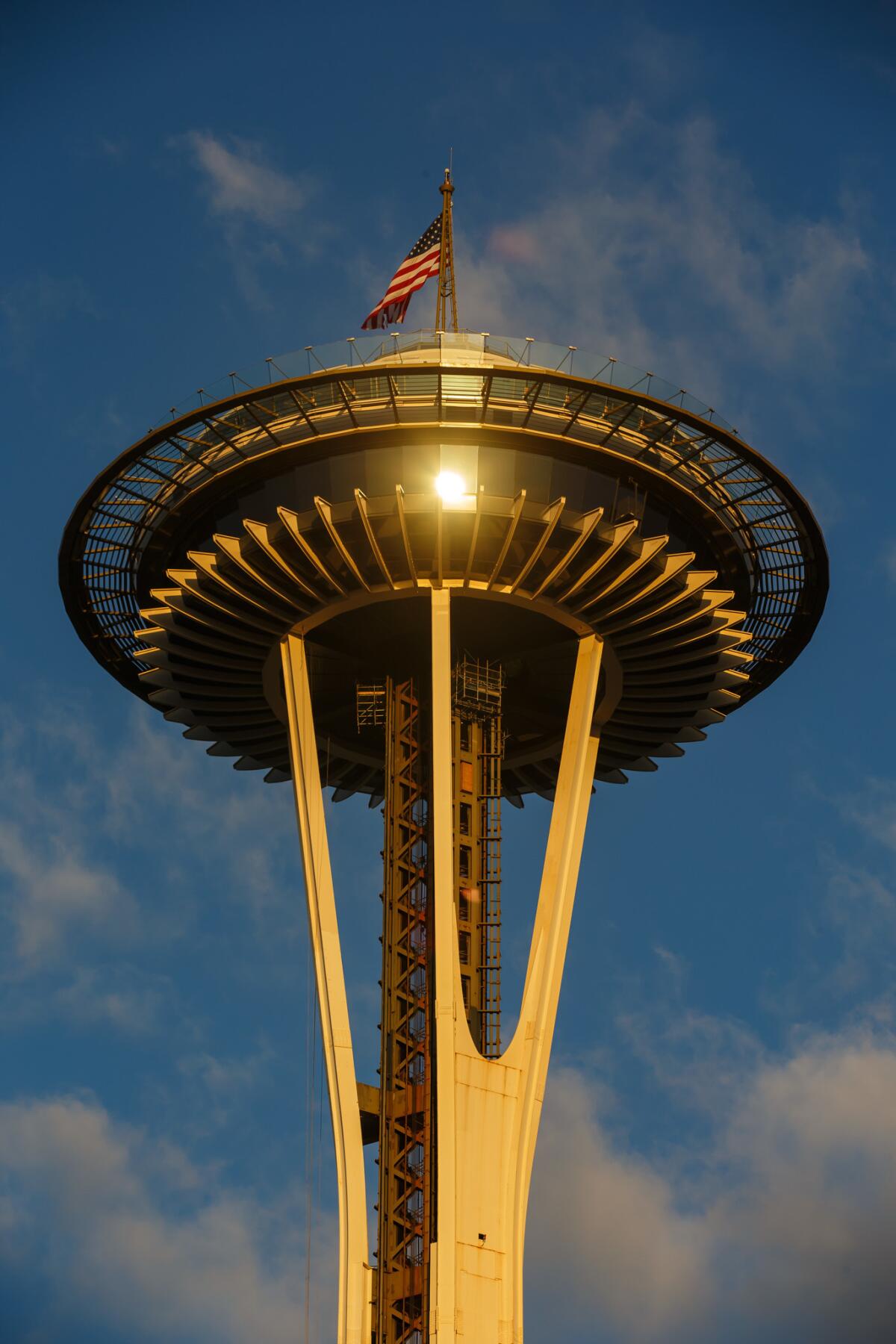
The Space Needle’s folksy, comfort food-oriented restaurant has long been one of the nation’s most popular, serving about 300,000 diners per year. But big plans are afoot to update the place, said Wright.
New York-based restaurant designer Adam Tihany will have his way with the space, and the menu is also being refreshed in advance of an opening later this fall. No opening date yet.
“We’re going to experiment,” Wright said. “We want to see what bubbles up from Seattle’s strong food scene. Maybe we have residencies there for the city’s top chefs. In keeping with the original impulse behind the Needle, we’re trying to imagine what a restaurant of the future would be like.”
But he said the restaurant’s most popular, most Instagrammed dish, the Lunar Orbiter, a bowl of ice cream served on smoking dry ice, will probably be back.
“If I can guarantee you anything, it’s that that will return.”
If you go
THE BEST WAY TO SEATTLE
From LAX, nonstop service to Seattle is offered on Alaska, Delta, American and United, and connecting service is offered on United, Alaska, Delta, American and Southwest. Restricted round-trip fares begin at $156, including all taxes and fees.
Space Needle, 400 Broad St., Seattle; (206) 905-2100 Open daily 9 a.m.-9 p.m. Adult admission, $32.50-$37.50; 65 and older, $27.50-$32.50; kids ages 5-12, $24.50-$28.50.
More to Read
Sign up for The Wild
We’ll help you find the best places to hike, bike and run, as well as the perfect silent spots for meditation and yoga.
You may occasionally receive promotional content from the Los Angeles Times.
